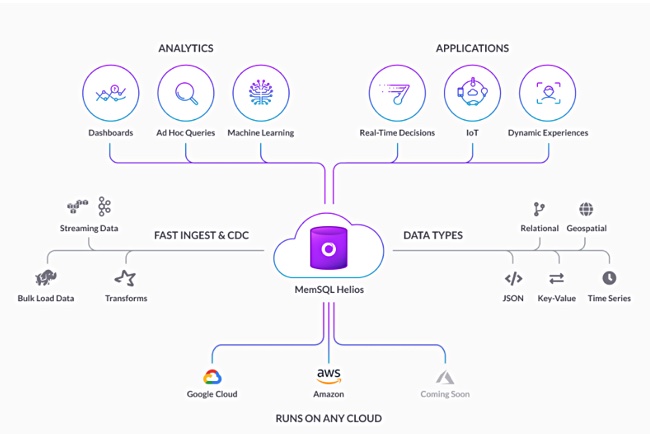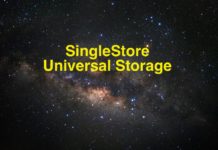MemSQL has released Helios, a cloud-native version of its eponymous in-memory database.
Helios provides access to MemSQL, running-in memory on AWS and the Google Cloud Platform. Azure support is on the way.
MemSQL is a distributed, in-memory relational database accessed through SQL. It is said to be much faster than other relational databases as it runs in memory, avoiding time-sapping IO to local or networked storage.
MemSQL Co-CEO Nikita Shamgunov, sent out a quote: “With the majority of growth in the database market moving to the cloud, the time is right to release MemSQL Helios for enterprises looking for a viable alternative to legacy on-premises vendors like Oracle and SAP.”
Oracle has its own cloud version of its database and SAP’s in-memory database HANA is available in the cloud too. So MemSQL is following them…
Helios is freely available via MemSQL’s website for preview. Pricing for the on-demand service has not been revealed but expect it to be cheaper than running MemSQL on-premises in your own servers.

SingleStore
MemSQL yesterday also released a beta version of MemSQL 7. The updated database manages data in a new way, called SingleStore. According to the company this reduces the pain of choosing between a rowstore or a columnstore for workloads. A columnstore approach is read-optimised for large data sets but works less well with lots of individual record queries. Rowstores are optimised to read index data records but are slower at mass data reads.
The company said MemSQL 7 reduces the differences between the two approaches. It claims it is the fastest database in real-world conditions and offers the lowest cost for performance.
MemSQL has system of record features – it is the authoritative source for multiple sources of the same data held inside an enterprise. Accordingly, it offers incremental backup, and synchronous replication with little performance penalty to ensure data is secure and available.
MemSQL 7.0 beta is available for download now, and will be generally available in the cloud and for download later this year.








